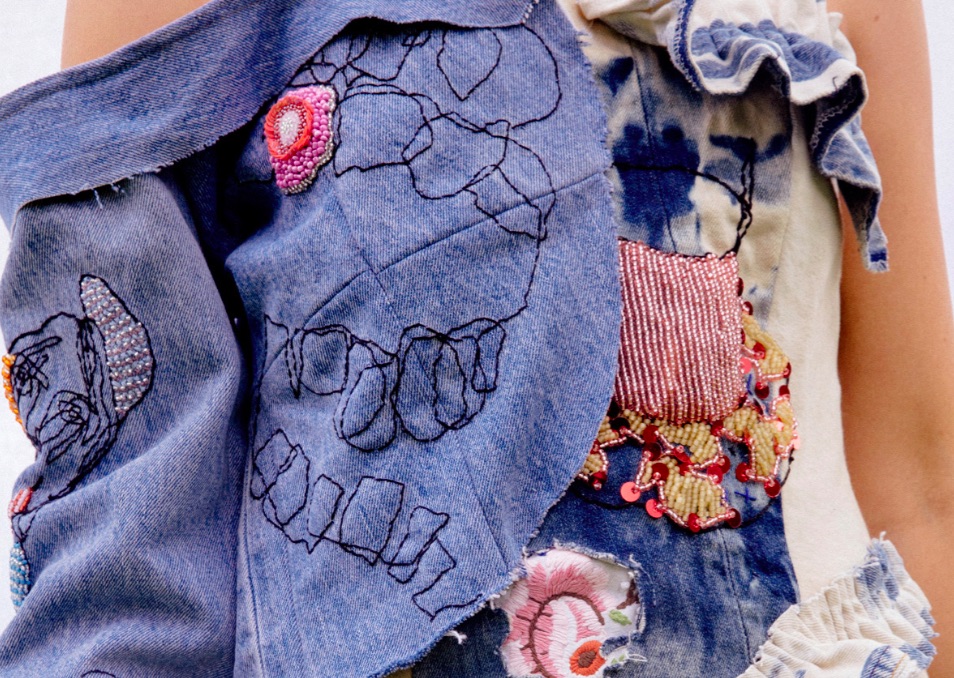
Fashion
Nathalie Ballout | Denim never dies
Born and raised in Dubai, half Swedish and half Lebanese, Nathalie Ballout is an avant-garde fashion designer based in London who champions diversity and individuality whilst maintaining a sustainable approach throughout her practice. Her focus is on denim, working largely with used Levi’s which she upcycles, transforming discarded materials into fresh, innovative and unique items of clothing. We had the chance to chat to her about her journey as a designer and the influences that shape her work.
Interview/Salomé Aubergé
How did you first get into fashion? What inspired you to pursue a career in the industry?
I was always interested in art. I did fine art at school and then decided to study fashion at London College of Fashion. I did a foundation there. I always knew I wanted to do fashion but at the time I didn’t know exactly in what field. I then found out I loved textiles and ended up doing textiles for fashion. I also always knew I wanted to have my own brand.
I started really thinking about it at university and in my final year it all kind of fell into place; my graduate show went really well, it received lots of attention from the press which was obviously really motivating.
Denim seems to be a recurring theme across your collections, what is your relationship to this material?
I saw my grad collection as my last opportunity to be as bold and experimental as I wanted before entering the real world, so I really went for it. I made things out of wire and all sorts, but I also wanted there to be an element of the collection that people could relate to, which is what got me interested in denim. It’s a strong, hardy, everyday material, that often ends up in the bin. I got inspired by this material and decided to upcycle.
I wanted to revive old materials that have the potential to be transformed. Denim is actually very harmful for the environment to produce and there is so much of it out there already, and good quality denim lasts for so long so I thought it was the perfect material to work with. So I now work exclusively with Levis denim which I upcycle. Most of the time they’re grade C or D, which is the really worn stuff that usually always gets cast aside.
I also sometimes collect other fabrics to incorporate into my designs. On a recent trip to Sweden I collected old hand-weaved Scandinavian linen that is still in such good shape despite its age. I also work a lot with embroidery, all my embroidery is done by hand.
What are your priorities when conceiving of a new collection? What guides the creative process?
My collections are usually concept based, I don’t just make clothes because they are pretty. I like to have a message behind what I create. Sometimes I know the message from the beginning and sometimes it takes a bit longer to take form. It might come from a movie, or anything else. Once I find inspiration from the main concept, I start sketching shapes.
Do you collaborate with other designers?
I have an ongoing collaboration with MARR LDN, we started a while ago and it’s going well. I also did a merchandise collaboration with my dear friend Dua Lipa. I hand-bleached and embroidered some of her merchandise T-shirts. They are all one of a kind pieces. I love collaboration! I think it’s so important, we all have different skill sets, ideas and expertise, it’s so inspiring to share these.
You’ve been involved in several upcycling projects, we take it you’re a keen advocate of sustainable fashion?
Yes absolutely, I aim to be a sustainable fashion designer. I really want to promote slow fashion, I want to promote the idea of buying less and taking care of what you buy. More than half of the Great Barrier Reef has been destroyed in recent years due to global warming, the rate at which it is dying is horrifying. We need to act together to minimize the harmful effects of climate change, that’s one of my messages.
Fast fashion is really detrimental to the environment, but it is a relatively recent phenomenon. People used to take much better care of their clothes. I remember my grandparents used to always take the time to meticulously mend something if it ripped rather than chucking it and buying a new one.
This is one of the inspirations behind my SS 19 collection, it is actually inspired by my family. The collection started as I began to draw my family with my eyes closed, I always draw better with my eyes closed! I reflected a lot on how there used to be such a different culture around clothes. Ironically since the emergence of care labels, people do not care for their clothes as much. Care labels never used to exist but people had the right attitudes, they just knew how to care for their belongings. Since the advent of fast fashion we have care labels but people don’t even look at them, it’s a different mentality.
“My collections are usually concept based, I don’t just make clothes because they are pretty. I like to have a message behind what I create.”
In your opinion, how can consumer attitudes towards fast fashion change?
I think people just need to become more aware, need to start thinking about where their clothes come from. There needs to be more transparency, people need to see what fast fashion looks like behind the scenes, in the factories, we all need to realize that it’s not possible to make a T-shirt that sells for £5 on a fair wage. We are also running low on resources, cotton stocks are depleting.
We have to raise awareness, but it has started already! Sustainability is a hot topic at the moment which is great. People are starting to really appreciate brands that are sustainable. A lot of brands are being forced to be transparent, to expose facts about production conditions, so things are coming out, the realities of child slavery in fashion for example, are being exposed.
Do your Arab origins influence your work?
My current SS19 collection is inspired by my family. My Lebanese grandmother used to love coffee, some embroidery in this collection is based on the patterns on Arabic coffee cups. But also it’s inspired by the way people used to care for clothes, like the way my grandparents used to.
When I was at school in Dubai I worked with Rami Al Ali but actually my own style and voice really started to take shape when I moved to London. My Lebanese grandmother used to sew and was very fashionable and my parents would always encourage me to get in touch with my creative side, so that was probably an influential force.
I am inspired by so many things, I really want to promote variety, I would like my clothes to be worn by people of all different sizes, cultural backgrounds etc… It’s so important to promote diversity within the fashion industry. At university they would make us do this exercise where we would have to identify our customer profiles, I always found that so hard! It’s not like my customer has to be someone in their mid-twenties with a smoothie in hand, I like to think that my customer is anyone who appreciates my work, whether it’s someone in fashion or a doctor who happens to appreciate craft.
Who are your favorite designers?
Galliano, his clothes really tell a story, he uses his craft to convey a message, sometimes even to make fun of something, which he does so elegantly. McQueen as well, I love how he never cared about what anyone had to say, he did what he wanted, his designs were so personal. He was also so theatrical but not in a purely costume kind of way, he never fell short of the stories he was telling. I’m all about fashion with a story, I like that romantic element. Both of them said I don’t care what anyone says or does, I’m just doing me!
Have you seen the new film about McQueen?
No I haven’t actually but I’m reading Kings and Gods at the moment, a book about the overlapping lives of Galliano and McQueen. I also love Vivienne Westwood, I love how she is quite old now but she’s still doing her thing, at the moment she’s very involved in environmental causes. I was actually at a rave once in London, and at 1am Vivienne Westwood appears on the stage and gives a speech about climate change! I also saw her at a Russel Brand talk, posing lots of questions from the audience.
What are your ambitions and future hopes for your brand?
I’ve always been a firm believer in the organic growth of a brand. These days, with the internet and Instagram it’s easy to jump on the bandwagon and have unrealistic expectations of how fast you want your brand to grow, but then it doesn’t last! I want my brand to grow organically, I want to do lots of little projects, I don’t believe in embarking on huge projects where in the end so many clothes go to waste. I would like to branch out a bit as well, work with accessories and footwear perhaps. I would love to do lots of different projects and have a piece of my brand all over the world. I would also love to have private clients and make couture pieces since I really enjoy making custom pieces. I like taking the time to design something with and for someone.
What would be your advice to emerging designers around the world?
Firstly, patience, we are so fixated with things happening straight away these days but it might take years to build a name for yourself and a reputation for the brand and that’s normal, people forget that today in an age of hyper-consumption and quick satisfaction. Patience is really important.
Cash flow is also a pragmatic piece of advice, it’s a necessity to keep creating, so make sure this is happening. Never lose your creativity! One of the biggest pressures in the industry is to commercialize things, you need to find a balance, keep your own unique voice. Competition is really crazy there are so many talented designers and artists out there, it’s important to not succumb to commercial pressure too much, to keep something you recognize as yours.
Try and be sustainable, it doesn’t necessarily have to be by using old fabrics, you can just not make as big collections, maybe just 40 pieces that are strong. Finally, don’t over-listen to other people, you will end up losing yourself. You don’t want to become the people who give you advice. I try to work according to this and it made me realize I know my brand even better than I thought I did.
Discover more about Nathalie right here
Or on her Instagram
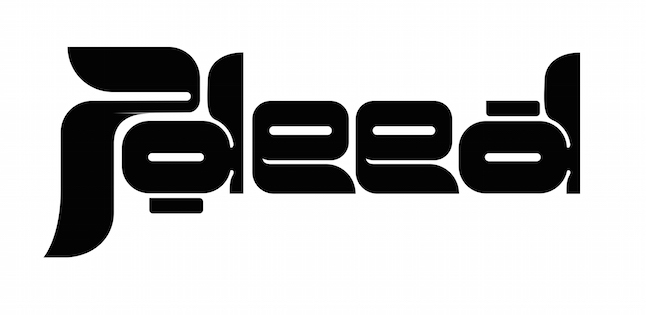
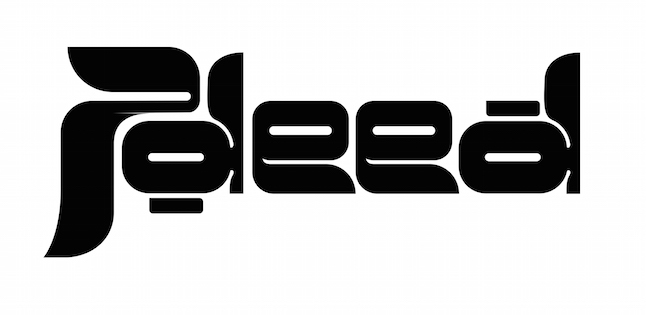
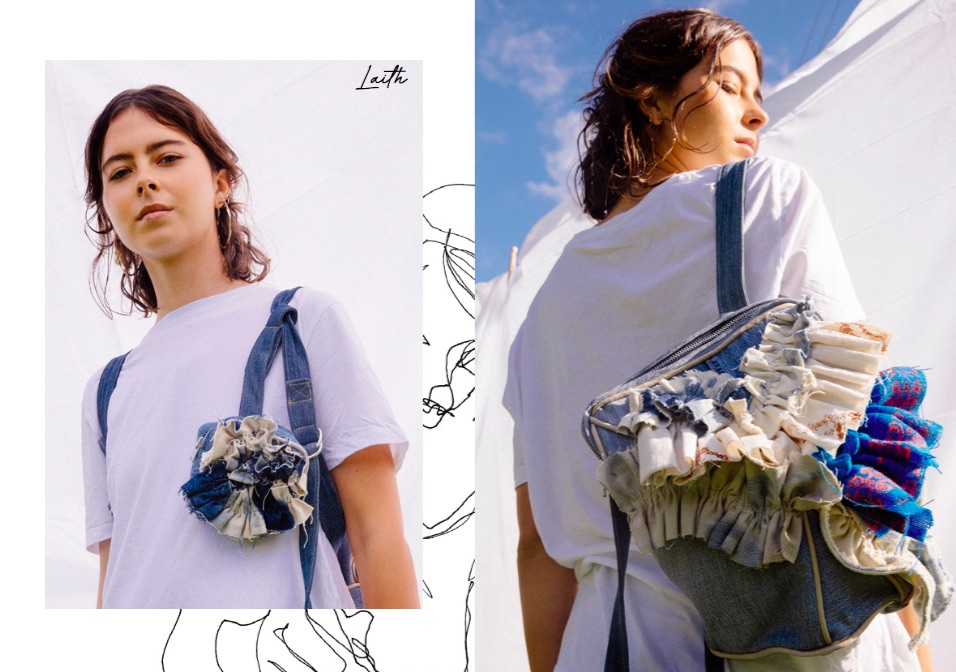


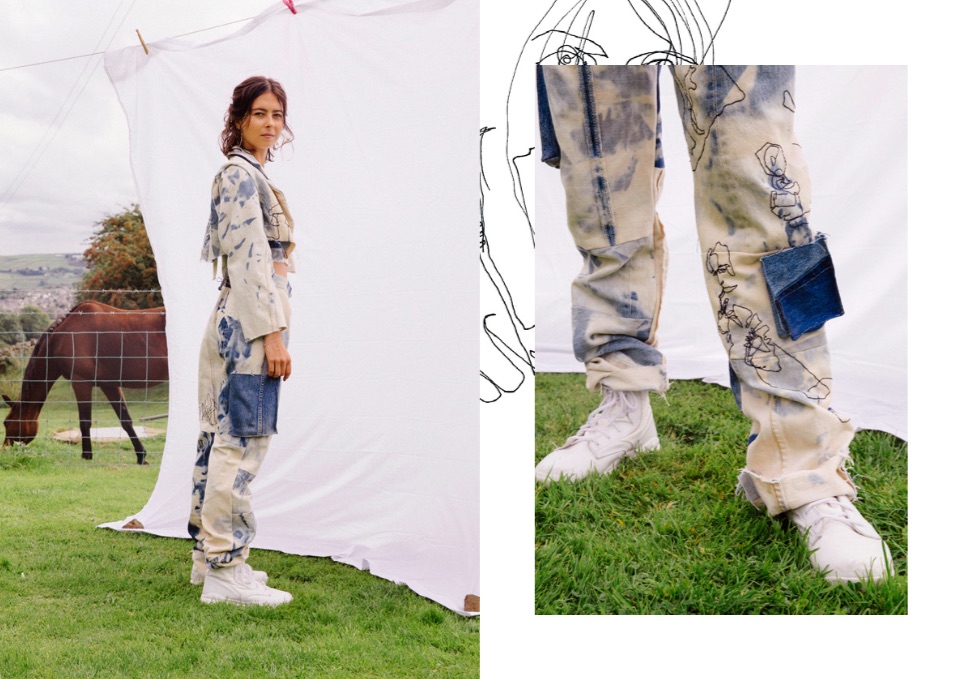
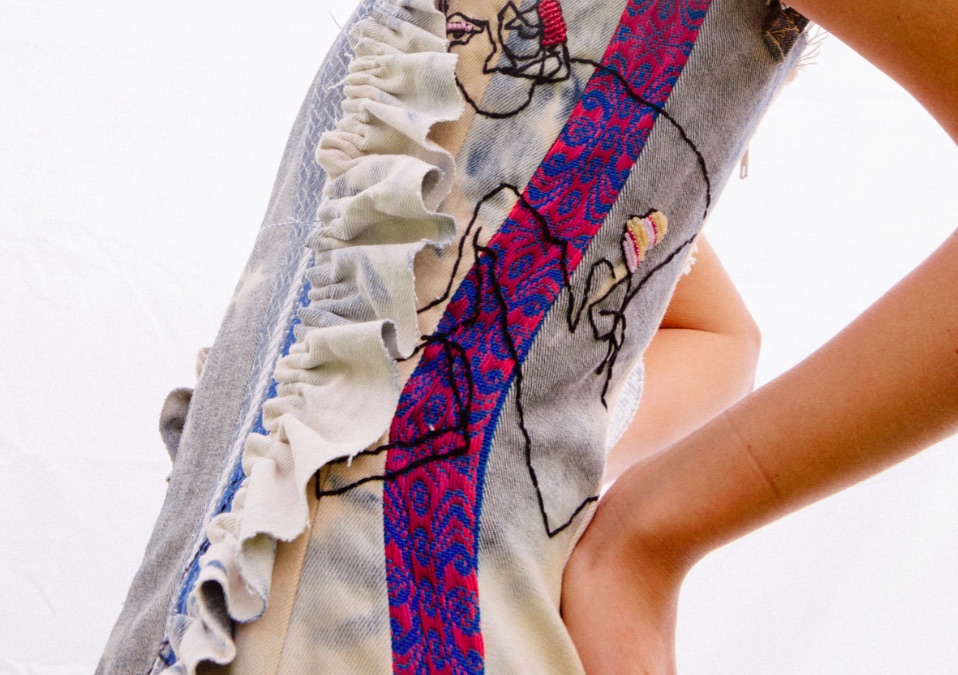

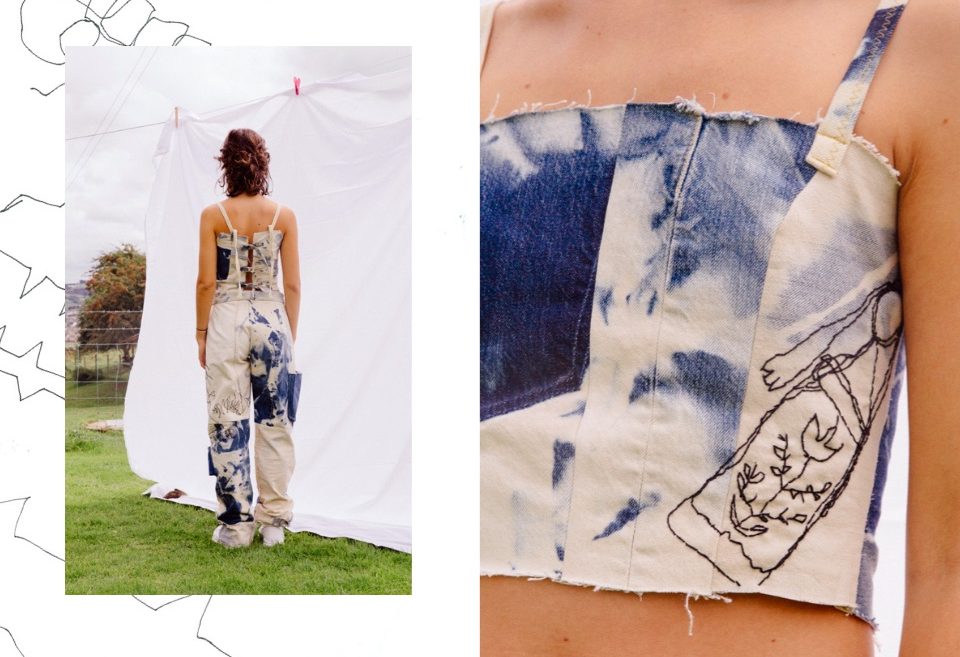





0 comments